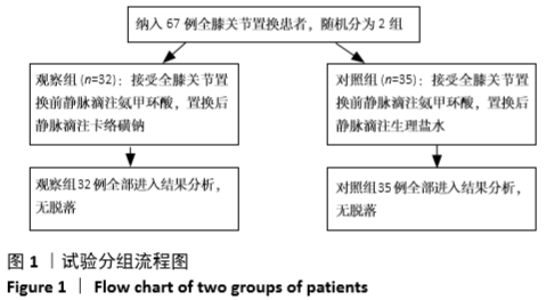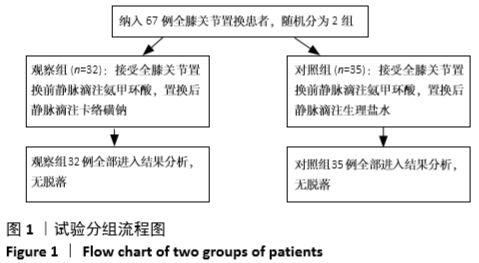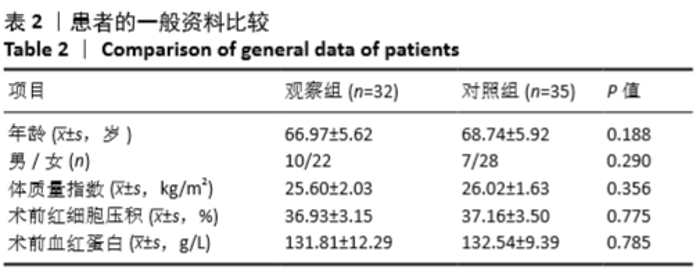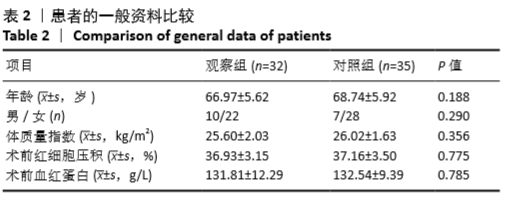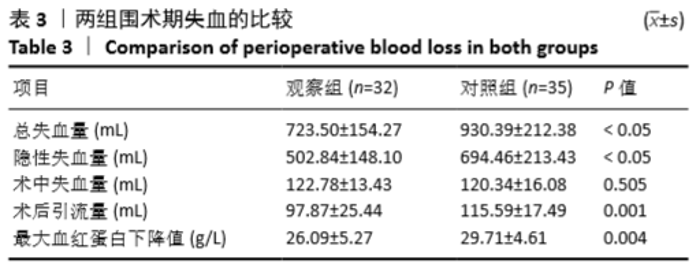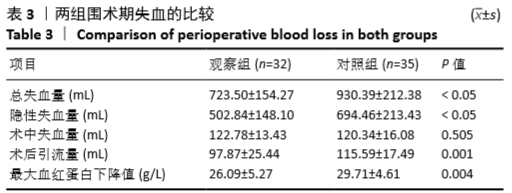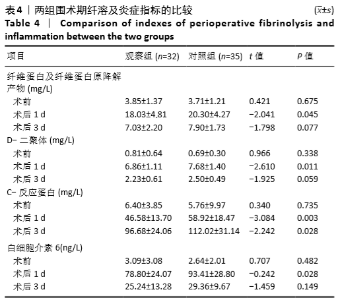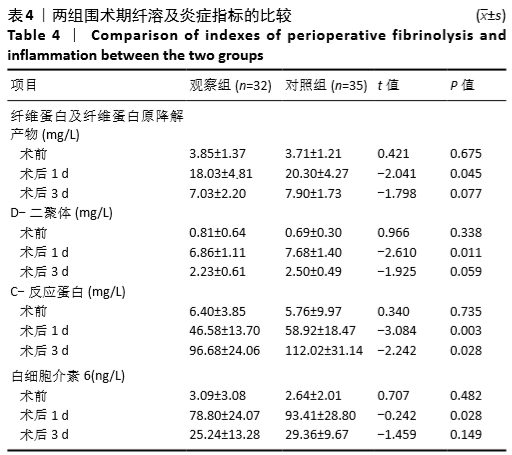[1] KURTZ S, ONG K, LAU E, et al. Projections of Primary and Revision Hip and Knee Arthroplasty in the United States from 2005 to 2030.J Bone Joint Surg Am.2007;89:780-785.
[2] SHEN PF, HOU WL, CHEN JB, et al. Effectiveness and safety of tranexamic acid for total knee arthroplasty: a prospective randomized controlled trial.Med Sci Monit. 2015;21:576-581.
[3] KLIKA AK, SMALL TJ, SALEH A, et al. Primary total knee arthroplasty allogenic transfusion trends, length of stay, and complications: nationwide inpatient sample 2000-2009.J Arthroplasty. 2014;29(11): 2070-2077.
[4] FRIEDMAN R, HOMERING M, Holberg G, et al.Allogeneic blood transfusions and postoperative infections after total hip or knee arthroplasty.J Bone Joint Surg.2014;96:272-278.
[5] HALLSTROM B, SINGAL B, COWEN ME, et al. The Michigan experience with safety and effectiveness of tranexamic acid use in hip and knee arthroplasty. J Bone Joint Surg Am. 2016;98:1646.
[6] SABBAG OD, ABDEL MP, AMUNDSON AW, et al. Tranexamic Acid Was Safe in Arthroplasty Patients With a History of Venous Thromboembolism:A Matched Outcome Study.J Arthroplasty. 2017; 32:246-250.
[7] LIU YM, MENG FT, YANG G, et al. Comparison of intra-articular versus intravenous application of tranexamic acid in total knee arthroplasty: A meta-analysis of randomized controlled trials. Arch Med Sci.2017;13: 533-540.
[8] GOLDSTEIN M, FELDMANN C, WULF H, et al. Tranexamic Acid Prophylaxis in Hip and Knee Joint Replacement.Dtsch Arztebl Int. 2017; 114(48):824-830.
[9] MATSUMOTO Y, HAYASHI T, HAYAKAWA Y, et al. Carbazochrome sodium sulphonate (AC-17) decreases the accumulation of tissue-type plasminogen activator in culture medium of human umbilical vein endothelial cells.Blood Coagul Fibrinolysis.1995;6:233-238.
[10] OH-OKA H, YAMADA T, NOTO H, et al. Effect of carbazochrome sodium sulfonate on refractory chronic prostatitis.Int J Urol.2014;21(11): 1162-1166.
[11] PASSALI GC, DE CORSO E, BASTANZA G, et al. An old drug for a new application: carbazochrome-sodium-sulfonate in HHT.J Clin Pharmacol. 2015;55(5):601-602.
[12] 周超.卡络磺钠在下肢骨科大手术中的应用[J].江苏医药, 2009, 35(9): 1095-1096.
[13] 中华医学会骨科学分会.中国骨科大手术静脉血栓栓塞症预防指南[J].中华骨科杂志,2016,36(2): 65-71.
[14] NADLER SB. Prediction of blood volume in normal human adults.Surgery.1961;51:224.
[15] GROSS JB. Estimating allowable blood loss: Corrected for dilution.Anesthesiology.1983; 58:277-280.
[16] FILLINGHAM YA, RAMKUMAR DB, JEVSEVAR DS, et al. Tranexamic Acid Use in Total Joint Arthroplasty: The Clinical Practice Guidelines Endorsed by the American Association of Hip and Knee Surgeons, American Society of Regional Anesthesia and Pain Medicine, American Academy of Orthopaedic Surgeons, Hip Society, and Knee Society.J Arthroplasty.2018;33:3065-3069.
[17] Wilde JM, Copp SN, McCauley JC, et al. One Dose of Intravenous Tranexamic Acid Is Equivalent to Two Doses in Total Hip and Knee Arthroplasty.J Bone Joint Surg. 2018;100:1104-1109.
[18] ONODERA T, MAJIMA T, SAWAGUCHI N, et al. Risk of Deep Venous Thrombosis in Drain Clamping With Tranexamic Acid and Carbazochrome Sodium Sulfonate Hydrate in Total Knee Arthroplasty.J Arthroplasty.2012;27:105-108.
[19] ADERINTO J, BRENKEL IJ. Pre-operative predictors of the requirement for blood transfusion following total hip replacement.Bone Joint J. 2004;86:970-973.
[20] BOUTSIADIS A, REYNOLDS RJ, SAFFARINI M, et al. Factors that influence blood loss and need for transfusion following total knee arthroplasty.Ann Transl Med.2017;5(21):418-418.
[21] 周宗科,翁习生,曲铁兵,等.中国髋、膝关节置换术加速康复--围术期管理策略专家共识[J].中华骨与关节外科杂志, 2016, 9(1): 10-15.
[22] XIE JW, MA J, YAO H, et al. Multiple Boluses of Intravenous Tranexamic Acid to Reduce Hidden Blood Loss After Primary Total Knee Arthroplasty Without Tourniquet: A Randomized Clinical Trial. J Arthroplasty.2016:2458-2464. |
